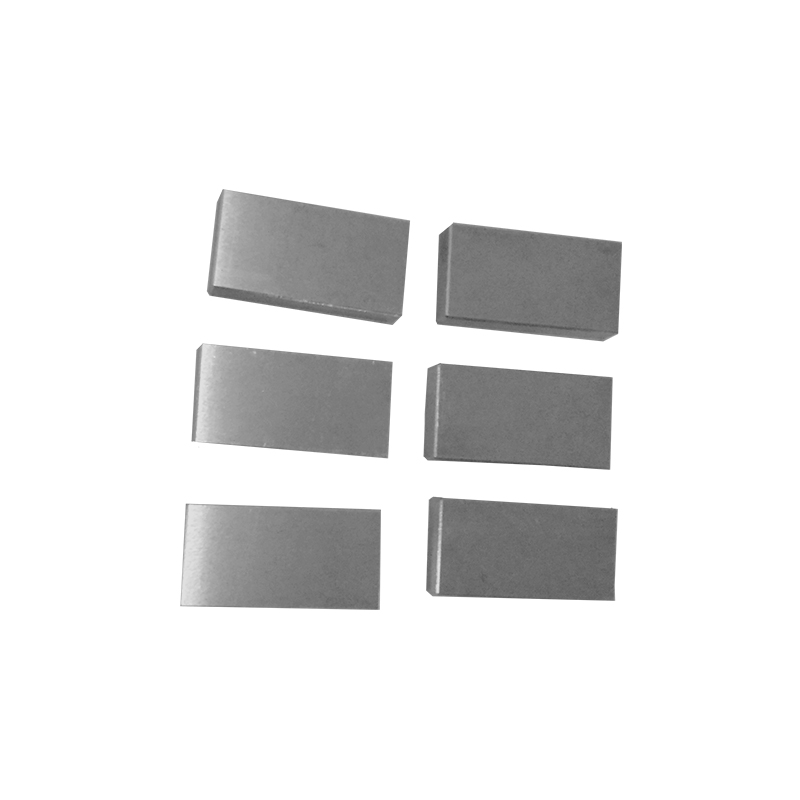Tungsten Alloy Plate is an alloy material made of tungsten as the base material and other metal elements (such as rhenium, copper, nickel, etc.). Due to its extremely high density, hardness and high temperature resistance, tungsten alloy has been widely used in aerospace, military, electronics, nuclear energy and other fields.
Tungsten alloy is one of the densest metals on earth, with a density of 17-19g/cm³. Compared with other metals, the density of tungsten alloy is almost 1.7 times that of steel, so it is often used in occasions requiring high density, such as weight balance, radiation shielding and radiation protection.
Tungsten has a melting point of up to 3422°C, the highest among all metals. Therefore, tungsten alloy materials can still maintain good mechanical properties and structural stability in extremely high temperature environments. It is widely used in equipment and components in high temperature environments and can withstand extreme working conditions.
Tungsten alloy plates have extremely high hardness and wear resistance, making them ideal for high-strength tools and mechanical parts. This property makes it perform well in applications that require high wear resistance, such as aircraft engine parts, drilling tools, etc.
Although tungsten alloy is not as corrosion-resistant and oxidative-resistant as some stainless steel alloys, it can still maintain good performance in high temperature, high pressure and corrosive environments. In particular, tungsten alloy has strong resistance to chemical corrosion in vacuum, inert gas or certain acidic and alkaline environments.

Although tungsten alloy has high hardness, it can still be cut, ground and formed through appropriate processing methods. This allows tungsten alloy plates to be manufactured into parts of different shapes and sizes according to different needs.
Due to its extremely high density and high temperature resistance, tungsten alloy plates are widely used in the aerospace industry. It can be used as a balance weight for aircraft, engine parts for missiles and rockets, and protective materials. In addition, tungsten alloy is also often used to manufacture shielding materials for spacecraft to resist the invasion of cosmic radiation and high-energy particles.
In the military field, tungsten alloy plates are used to manufacture high-performance armor-piercing projectiles, missile warheads and other weapons. Due to its high density, tungsten alloy can increase the weight and penetration of the warhead without increasing the volume, allowing weapons to penetrate armored targets more effectively.
Because tungsten alloy has good radiation shielding properties, it is often used in radiation protection equipment in the medical, nuclear energy and other industries. For example, tungsten alloy can be used to manufacture protective covers for nuclear reactors, radiation shielding for X-ray machines, etc., to protect workers from radiation damage.
In the automotive and machinery manufacturing fields, tungsten alloy plates can be used to manufacture high-precision, high-load parts such as bearings, gears, drills, etc. These parts often work under high strength and high pressure, and the excellent hardness and wear resistance of tungsten alloy ensure its long service life.
Tungsten alloy plates are also widely used in the electronics industry, especially in high-frequency electronic equipment, as heat dissipation materials or as connecting devices. The good conductivity and high temperature resistance of tungsten alloy make it one of the indispensable materials in electronic equipment.
The high density of tungsten alloy makes it particularly good in applications that require weight balance. For example, in the aerospace and automotive industries, tungsten alloy is often used to make counterweight components, making the equipment more stable in motion and reducing the need for additional balancing devices.
The high hardness and wear resistance of tungsten alloy plates mean that it can work for a long time in harsh environments, reducing the frequency of replacement of parts and reducing maintenance costs. This feature is particularly suitable for heavy-load and high-friction industrial equipment.
The high melting point and high temperature resistance of tungsten alloy make it perform well in the aerospace, military and metallurgical industries. Many high-temperature equipment and components need to be exposed to extremely high temperatures for a long time, and the stability of tungsten alloy ensures its reliability in these environments.
Tungsten alloy is a very durable and long-lasting material that can maintain excellent performance after long-term use, reducing the waste of resources caused by material replacement. As a naturally occurring metal, the recycling and reuse process of tungsten is relatively simple and meets environmental protection requirements.
Tungsten alloy plates have great application potential in many high-tech fields due to their excellent density, high temperature resistance, hardness and corrosion resistance. Whether in high-end fields such as aerospace, military, radiation protection, or in automobile manufacturing and mechanical equipment, the outstanding performance of tungsten alloys has provided strong support for the development of industry and technology. With the continuous advancement of technology, tungsten alloy materials will play an important role in more innovative fields and become one of the core materials to promote the development of modern industry.












